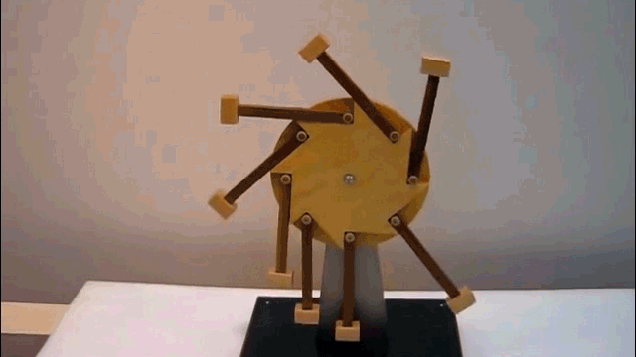What is Perpetual Motion?
A perpetual motion machine is (as the name implies) a machine that moves perpetually; it never stops. Ever. So if you created one today and set it going, it would keep on going until the Big Freeze. Calling that "a long time" is an understatement of epic proportions.
If you aren't aware, the Big Freeze is the theoretical end of, well, everything. It is the point at which the universe has expanded so much that it reaches a state of zero thermodynamic free energy. In other words, it is the point at which the cosmos, as a whole, will be unable to sustain motion. All of spacetime will be at absolute zero (the coldest known temperature, where all movement stops).
In short, the Big Freeze is essentially a time of eternal, unending, utterly still darkness. Fortunately, it's not set to happen for another 100 trillion years or so.
In any case, the important thing to remember is that a true perpetual motion machine would be able to run at least that long.
There are many designs on the internet that claim to be working designs for perpetual motion machines. If you look at those designs, it's not too farfetched to think that some of those machines could (if engineered correctly) move without stopping. And if we could do this, the implications would be staggering. We would essentially have an eternal source of energy. More than that, it would be free energy.
Unfortunately, thanks to the fundamental physics of our universe, perpetual motion machines are impossible.
Now, I know that there are probably a lot of people who are saying, "You should never say 'never' in science." And fair enough. I admit that new knowledge could come along; however, in order for perpetual motion machines to be possible, this new knowledge would have to break physics as we know it. We'd be wrong about simply everything, and nearly none of our observations would make any sense.
If this isn't "impossible," it is about as close as you can get in science. So let's breakdown perpetual motion machines and why we'll never be able to make one.
The Physics of Perpetual Motion
The first law of thermodynamics is the law of conservation of energy. It states that energy is always conserved. It means that energy can be neither created nor destroyed. Instead, it simply changes from one form to another. To keep a machine moving, the energy applied should stay with the machine without any losses. Because of this fact alone, it is impossible to build perpetual motion machines.
Why? To build a perpetual motion machine we must accomplish many things:
1.) The machine should not have any "rubbing" parts: Any moving part must not touch other parts. This is because of friction that would be created between the two. This friction will ultimately cause the machine to lose its energy to heat. Making the surfaces smooth is not enough, as there is no perfectly smooth object. Heat will always be generated when two parts rub on each other (and that generation of heat is energy transference i.e, the motion machine losing energy).
2.) The machine must be operated inside a vacuum (no air): The reason for this has to do with the reason listed in number one. Operating the machine anywhere will cause the machine to lose energy due to the friction between the moving parts and air. Although the energy lost due to air friction is very small, remember, we are talking about perpetual motion machines here, if there is a loss mechanism, eventually, the machine will still lose its energy and run down (even if it takes a long, long time).
3.) The machine should not produce any sound: Sound is also a form of energy; if the machine is making any sound, that means that it is also losing energy.
For the sake of argument, let's just say that somehow, we are able to build a perpetual motion machine. Will we be able to get energy from it? Yes, but only up to the energy that is used as an input to start the movement. A perpetual motion machine in real life will just be an energy storage. We must remember that the energy cannot be created; it always has to come from something.
So, if you happen to be able to build one, you will need energy to start the motion. This is the only energy that you will be able to harvest, since, as stated previously, energy cannot be created. Kind of a pointless device, really.
Additional reporting by Jethro Andal.
Share This Article
